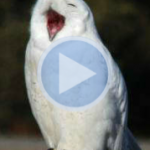Summary
Students created their own blogs about an animal of their choice using Instablogg and a variety of other web tools. Topics included on the blog were the animal’s adaptations, habitat, diet, and fun facts. The students had 2 class periods to complete their research using the Internet and books from the library. As part of their research, students found an online photo of their animal to import into Thinglink. Thinglink allows users to create an interactive image with hotspots that can be clicked for more information. The students created a Thinglink image of their animal incorporating 3 adaptations (hotspots) and telling why they were beneficial to their animal. Students then created a video about the animal’s habitat using Photobooth and a background they selected so they appeared to be standing in the animal’s habitat. The video also included a variety of “fun” interesting facts. Videos were uploaded to Vimeo so students could post them to their blogs. Next, the students used Audacity to record an audio description of the diet of their animal. Those audio files were uploaded to Blabberize along with another photo of their animal, so it appeared like the animal was talking about its diet. The final step was to create a poll that asks visitors a question about their animal. Students embedded the Thinglink, the video, the Blabberize, and the poll onto their blogs. All blog links were posted to one page for easy access.
TIPC Ratings
This project scores in the Approaching range of Research & Information Fluency. The students chose an animal they were interested in and used Duck Duck Go (Safe Internet) search engine to acquire their information. They also searched for and selected their own books from the library. The accuracy and reliability of the sources was discussed. To guide their research, we talked about what people might want to know about the animals and the class developed 3 categories that they needed to research.
This project scores in the Developing range of Communication & Collaboration. Students did not work in groups to conduct their research, but they did collaborate to produce the final product using a variety of digital tools. Their blog posts are online for others to view and interact with outside the classroom.
This project scores in the Developing range of Critical Thinking & Problem Solving. Students worked together to figure out what questions they had about their animals and what categories they wanted to learn more about. They collaborated to answer some of the essential questions that they came up with together. They determined what was important to include on their blogs and how to divide the information based on which web tool would best convey that information.
This project scores in the Approaching range of Creativity & Innovation. The students chose their animal, the information, and the pictures they wanted to use. They were introduced to a variety of web tools and were able to choose 3 of them to use to present their animal information on their blogs. They created useful, interactive, and entertaining sites for other people to learn more about their animals.
Download Files
- Lesson Plan (Word)
- Links to class page and student blogs
- Student Sample 1 – Peacock
- Student Sample 2 – Tasmanian Devil
- Student Sample 3 – Snowy Owl
- Student Sample 4 – Warthog
- Student Sample 5 – Black Rhino



